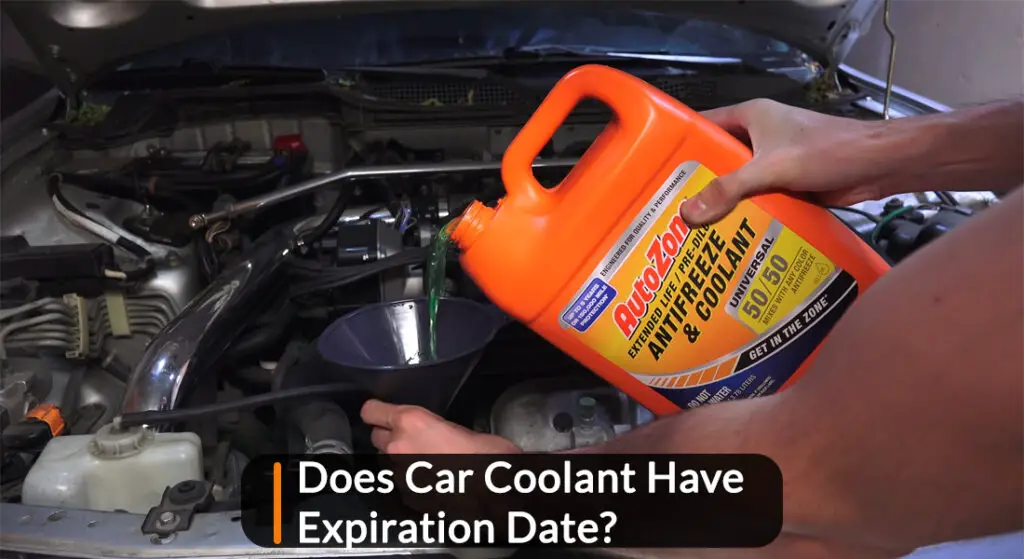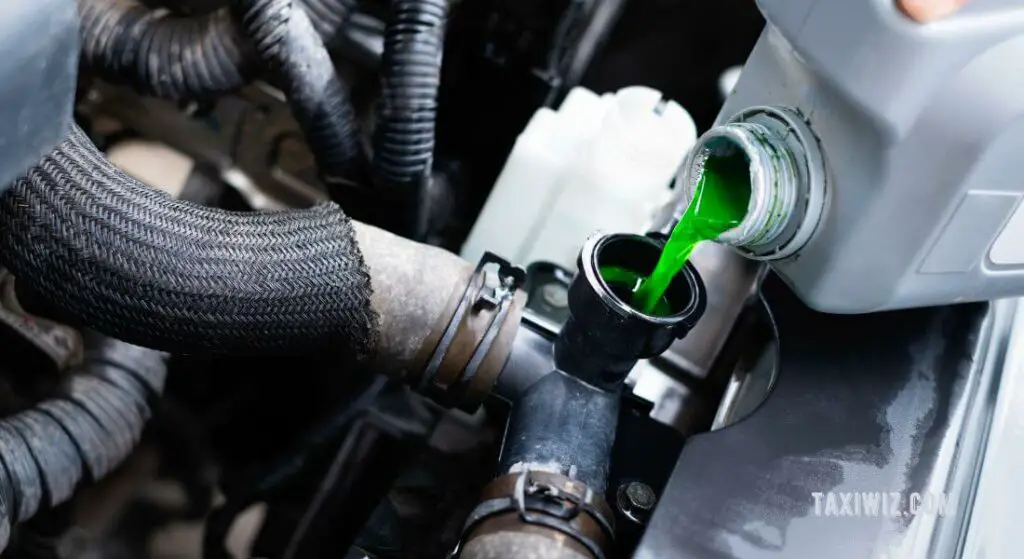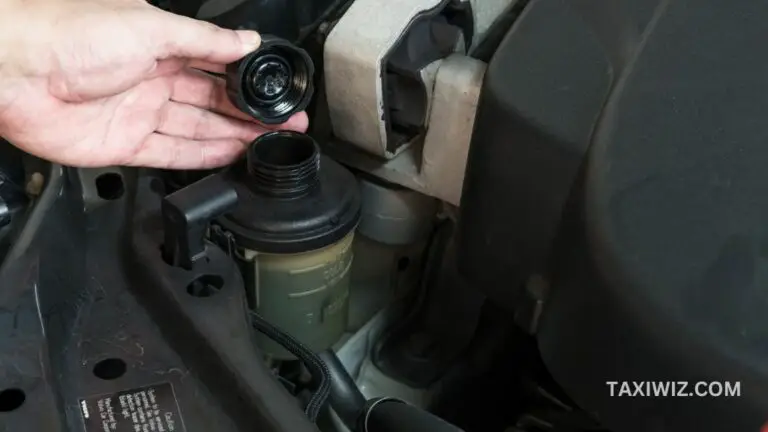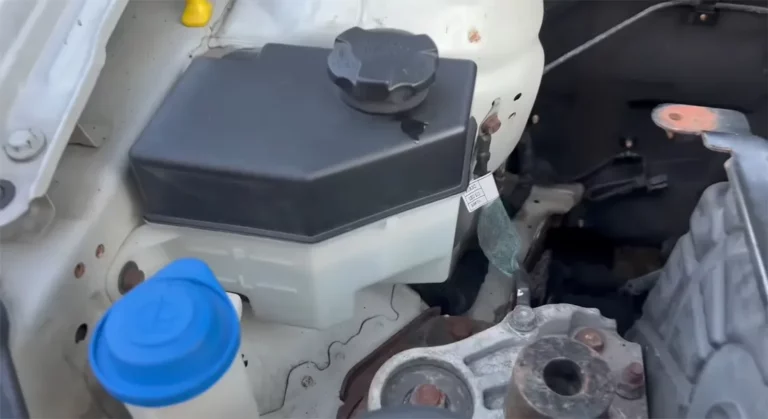Does Coolant Expire & How To Detect It Expired or Not?
An obvious reason why your engine manages to stay cool is because of the radiator. It absorbs, transfers, and dissipates heat and prevents our car from overheating or freezing. This mechanism can’t be productive without its energy drink “coolant”.
Hence, we would want the fluid to last long since it pushes the radiator to keep functioning well. This may make you wonder- what’s its shelf-life?
Does coolant expire? Yes, coolant expires and it can last from 1-5 years or more depending on several factors like formulation and storage condition.
It can even go bad before expiration. Why? We’ll discuss the reasons in this article.

Shelf Life Of Coolant or Expiry Date
Conventional coolant can stay good for at least a year or three while Long life coolant (LLC) can last around 5 years or more.
However, it varies based on factors like quality and type of coolant, content formulation, concentration, pH level, exposure to different elements, storage condition, and whether it’s opened or not.
An unopened and well-stored conventional coolant can last around 2 to 3 years while LLC can go from 5 to 10 years. But let’s say, it’s opened and stored right. In that case, the conventional one can last from 1 to 3 years whereas LLC can stay well from 2 to 5 years.
Note that the efficiency of any coolant can reduce once it’s exposed to moisture, light, air, and extreme temps. But we can maximize its lifespan by storing it in a cool and dry place away from external elements.
Now What about the One that we Use?Usually, the shelf life of coolant that’s opened and well-stored is close to one that’s properly used.
Let me give you a table on car coolant expiry date to understand better.
| Type and Condition | Duration |
| Conventional coolant, Sealed. | 2 to 3 years |
| Conventional coolant, Opened/Used. | 1 to 3 years |
| Long Life Coolant, Sealed. | 5 to 10 years. |
| Long Life Coolant, Opened/Used. | 2 to 6 years |
How Do I Know If My Coolant Is Still Good?

Symptoms like clarity, accurate pH level, and fresh smell indicate that your coolant is still good. Let me explain it in detail.
1. Clarity
The coolant usually comes in bright colors and should look clear.
2. pH Level
Make sure the pH of engine coolant ranges from 8 to 11 for conventional and 7 to 9.5 for Long Life ones.
3. Sweet Smell
A fresh coolant naturally gives off a sweet aroma. However, this can indicate an issue too. If you get a strong sweet smell from the engine bay, check for leakages.
4. Slippery
In case your coolant feels smooth and slippery to touch, I’d say it’s still good.
Common Symptoms Of Expired Coolant
Discoloration, smell, and out-of-range pH may indicate your coolant has gone bad or expired and needs a flush.
Discoloration
Exposure to moisture, air, minerals, light, and foreign water, can contaminate coolant. Moreover, other common contaminants include fuel; transmission fluid; lubricants, metals (like copper, zinc, and lead particles); and debris. All these lead to an unwanted chemical reaction or oxidation. As a result, the coolant becomes cloudy, rusty, and discolored.
Acidic or Alkaline
The pH level going below 7 indicates the acidity of coolants. It mostly happens due to degradation of organic acids and glycol over time. The more these contents are exposed to contaminants and high temps, the quicker they break down and become acidic.
Contrariwise, increase in pH level over 11 makes the coolant more alkaline. Usually, some additives can have alkaline compounds like calcium carbonate that cause the coolant to be basic.
Odor
Coolant degrades over time causing it to have a strong smell. Two very common reasons behind it are contamination and extreme temps.
Besides, damaged heads and gaskets can cause coolant and motor oil to mix which leads to a burnt odor.
Problems With Expired Coolant And Solution
Contamination and content breakdown are two major characteristics of expired coolant that result in other issues. If these pop up, try out the solutions I added here.
Corrosion
When coolant expires, it becomes harmful to both the radiator and engine. One big reason is that contaminants like debris and rust particles accumulate inside and cause damage to the components. This works to make the coolant leak out of the reservoir and come in contact with metal parts. As a result, we encounter corrosion.
Meanwhile, rust inhibitors in the coolant become less effective over time. And due to the breakdown, such additives fail to neutralize corrosive substances. Consequently, it further increases the risk of corrosion.
Not just that, bad coolants become too acidic thanks to the degraded additives. The acidity of fluid means drop in pH level which can lead to corrosion.
Solutions
- Monitor the pH level regularly with a pH meter or paper.
- Add a coolant additive that adjusts the pH or pH-balancing solution.
- Repair or replace the corroded components.
- Pour some fresh coolants with good rust inhibitor additives.
Scale and Sediment Buildup
Expired coolants also mean the breakdown of scale inhibitors like phosphate esters or phosphino-carboxylate. So consequently, it can’t stop buildups of minerals and other impurities in water.
That’s not the end. Additive breakdown can increase the pH level of coolant and make it too alkaline. This causes sediment and scaling buildups too.
These deposits form due to contaminant accumulation. And for this, we find blockage in the radiator, engine, and different hoses.
Not just that, it further leads to several issues like increased fuel consumption, poor cooling performance, and system damage.
Solutions
- Make sure to check coolant regularly and replace when needed.
- Take it to a mechanic service to get the cooling system flush thoroughly.
- Use a coolant flush product if needed.
- Better if you add coolant with good scale inhibitor additive.
- Use a coolant additive that adjusts the pH or pH balancing solution if needed.
Reduced Cooling Capacity
A primary role of coolant is to help regulate the engine temp. However, once expired, the contaminants break down contents which lead to poor efficiency of the fluid.
Plus, it causes clogs and leaks that lower the fluid circulation as well as fail the engine and radiator.
Solutions
- Repair and replace damaged components.
- Clear up the clogs and fix the leaks.
- Opt for high-quality LLC as it lasts longer.
Mechanism Damage
When coolant hits the expiry date, it’s obvious that it can no longer maintain proper temps of engine. As such fluids are already contaminated, it can clog the passages across the system and prevent proper fluid circulation. All these lead to overheating and failure of radiator and engine.
Contrariwise, coolant expiration can freeze both mechanisms at colder temps. It’s because contamination lowers the ability of coolant to prevent freezing. So, it can result in system damage too.
Moreover, bad coolants lose the properties of contents. Instead of providing protection, it can be a reason for failing mechanisms.
Solutions
- Drain the cooling system properly.
- Use coolant with fungicide or biocide additives.
- Clear up the blocks and fix the leakage.
- Repair or replace the damaged parts. It could be tubes, thermostats, water pumps, heads, and gaskets.
Here’s a table showing some issues that you may face from using expired coolant with possible solutions:
| Problems That Arise | Solutions |
| Corrosion | Replace corrosive parts. Use high-quality coolant with rust inhibitor additives. |
| Scale and Sediment Buildup | Use a coolant-flush product and good scale inhibitor additives. |
| Reduced Cooling Capacity | Clear up clogs and fix leaks. Use high-quality LLC. |
| Mechanism Damage | Fix blockages and leaks. Repair or replace damaged parts. Use fresh coolant |
| Contamination | Drain cooling system. Add coolant with fungicide or biocide additive |
Frequently Asked Questions (FAQs)
What Is Engine Coolant?
Coolant is a mix of ethylene/propylene glycol and water that mostly comes in a 50:50 ratio.
The glycol there works as antifreeze to prevent the coolant from freezing at extremely low temperatures. Plus, it protects the radiator from boiling-level heat.
In short, these compounds lower the freezing point down to -34°F and raise boiling point up to 128°F. However, it varies based on the percentage of antifreeze in fluid.
Besides the main contents, it has a small number of additives like scale and rust inhibitors.
It’s typically green or bright yellow but comes in red, blue, pink, and orange as well. The color variation makes it easy to detect the coolant among other fluids.
What Happens To Coolant After 5 Years?
Some coolants may lose their effectiveness after 5 years due to chemical breakdown and contamination which lead to corrosion and/or sediment buildup.
However, it depends on the type, the way it’s used, and storage condition. Many Long life coolants can last over 5 years if properly used and stored.
Does 50-50 Coolant Expire?
Yes, 50:50 mix of water and antifreeze coolant expires like any other variety.
A conventional one can last up to 3 years while Long Life coolant last around 5 years once opened and used well. However, the shelf-life varies based on different formulations.
Final Words
Coolant plays a big role in regulating the engine temperature and defending components against corrosion. But its use, elements exposure, and other factors degrade the fluid over time and make it reach the expiry date.
Although we can prolong the shelf-life through proper use and storage, I suggest regular checking and maintenance. Most experts recommend changing coolant after every 2 years or 30,000 miles. Also, if you notice any symptoms even before its expiry date, get a fresh batch.



